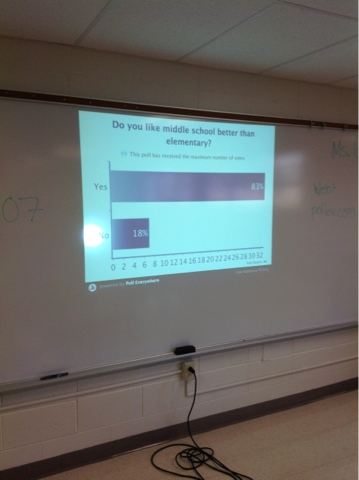The math department is getting ready to embark in "Lesson Study," and for those of you who haven't heard of it, here it is in it's purest form:
Step One: Determine the teaching strategy you want to try (i.e., your risk).
Step Two: Plan the lesson using the strategy within your PLC and with any necessary support.
Step Three: Teach the lesson in one class while the other PLC partner observes, makes notes, etc.
Step Four: Reflect upon the strategy and make changes for future implementation.
Step Five: Use "Lesson Study" strategy in future classes and adapt for future lessons.
As a systematic strategy, it works to pull teachers from a class to observe one another and have a thorough reflection process, but there are other ways you can "take the risk" without going to this level of study.
Here, a PLC is teaching the same outcome. In one classroom, students are doing a Webquest to research the time while in the other, students are writing letters from the perspective of those within the time period. Both outcomes should be the same, yet the teachers have very different strategies to teach the content. During their PLC discussions after the common assessment, they can determine which strategy was most impactful. This is a form of lesson study.
 |
| Webquest |
 |
| Using resources and notes to write letter |
 |
| Organizing their writing |
Prior to our RAP PD session on Sept. 18th, a PLC did a "lesson study" on the RAP continuum. Working with one class of students, they practiced scoring and building understanding of a strong RAP strategy. This practice before implementation with staff, allowed us to see any flaws/challenges with the strategy.
 |
| The Continuum |













































